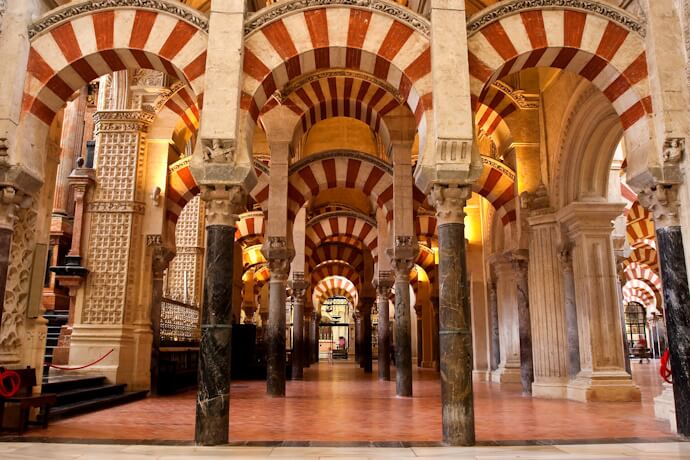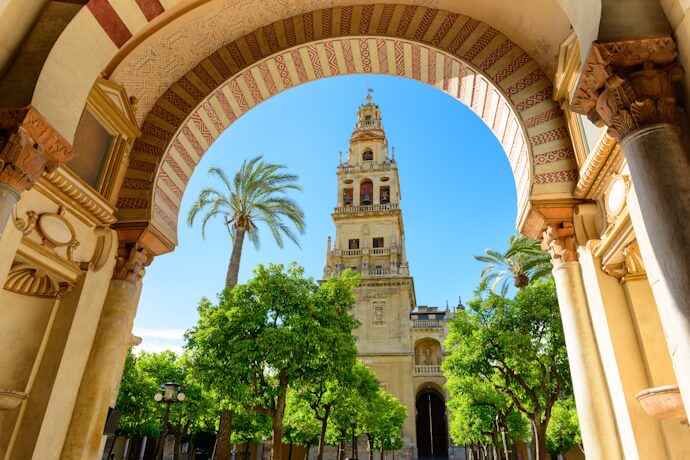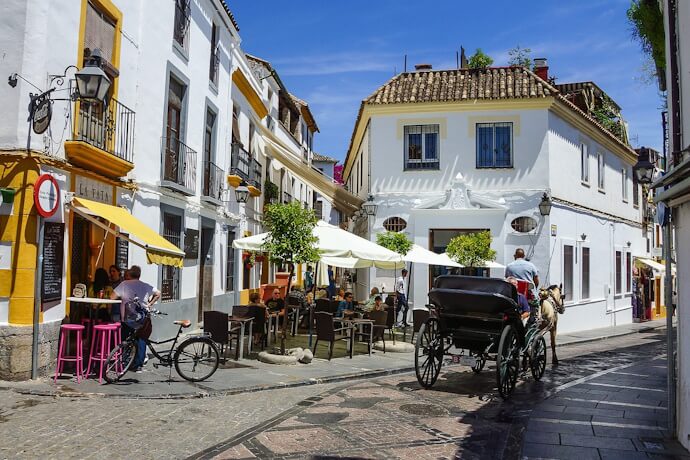To visit Córdoba is to know one of the most beautiful cities in Spain! Alongside Seville and Granada, it is a star city of the Andalusia region, famous worldwide for its Mosque-Cathedral and the iconic city centre that earned it the classification of UNESCO World Heritage.
Founded during the 2nd century BC by the Romans, Córdoba's glory unfolded in the 8th century following the Moorish conquest, witnessing the construction of hundreds of mosques, palaces and public buildings. By the 13th century, under the rule of the Catholic King Ferdinand III, Córdoba's Great Mosque underwent conversion into a cathedral and new defensive structures were erected. Nowadays, there is no shortage of things to see and do in Córdoba!
So, if you are looking for a fascinating destination for a getaway in Spain, with an extraordinary historical legacy and a lively culture, then prepare yourself, because Córdoba is about to become your favourite!
The astonishing Mosque-Cathedral
The Mosque-Cathedral of Córdoba, also known as the Mezquita-Catedral, stands as an architectural masterpiece and a symbol of religious coexistence in Andalusia. Originally built as a Visigothic church, it was later transformed into a mosque during the Islamic rule in the 8th century.
The highlight of the Mezquita is its vast prayer hall adorned with horseshoe arches and a mesmerizing forest of over 800 columns made of various materials such as jasper, onyx and marble. The mihrab, a richly decorated prayer niche, reflects the exquisite craftsmanship of Islamic art. Following the Christian Reconquista in the 1200s, the mosque was consecrated as a cathedral, leading to the incorporation of Gothic, Renaissance and Baroque elements.
Visiting the Mosque-Cathedral of Córdoba is an ethereal journey through time, where the interplay of light and shadow dances upon the intricate arches and columns. As you wander through the labyrinthine corridors, the seamless fusion of Moorish splendour and Christian grandeur evokes a profound sense of awe. One cannot help but feel the weight of centuries, a testament to the cultural transitions and coexistence that define Córdoba's rich tapestry.
City of the three cultures
Córdoba is affectionately known as the "City of the Three Cultures" due to its remarkable historical legacy shaped by the coexistence of Muslim, Jewish and Christian communities throughout various periods.
During the Islamic Golden Age, particularly under the Umayyad Caliphate in the 8th to 10th centuries, Córdoba was renowned for its cultural flourishing and religious tolerance. The unique blend of cultures is vividly reflected in the city's architecture, traditions and social fabric. However, as political dynamics shifted and power changed hands, the historical record also reflects challenges and conflicts among the three cultures in Córdoba.
The city's designation as the "City of the Three Cultures" today celebrates its diverse heritage, acknowledging the complex interactions that shaped its history.
A compact and diverse historic centre
Córdoba's historic centre is a captivating tapestry of time, where the city's rich and diverse history unfolds within a compact and enchanting labyrinth of streets, embodying millennia of occupation by diverse cultural groups – Roman, Visigoth, Islamic, Judaic and Catholic – each leaving an indelible mark.
While at its heart stands the mesmerizing Mosque-Cathedral, just a stone's throw away lies the Jewish Quarter, or Judería, a charming district with narrow alleys, whitewashed houses and hidden patios. It is a living museum, where each step showcases the city's cultural richness. As one meanders through its streets, the fusion of architectural styles and inviting plazas creates an immersive experience, inviting visitors to embrace the spirit of Córdoba's storied past.
Picturesque patios and flower décor
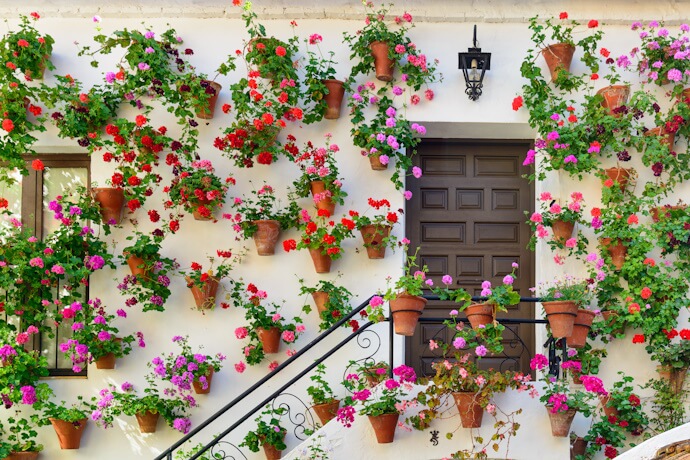
Córdoba's allure extends beyond its historic monuments to the enchanting world of its picturesque patios and the vibrant display of flower pot décor. Wander through the narrow alleys of the city, and you will be captivated by the intimate charm of these hidden courtyards, known as patios. They are a sensory feast, boasting a kaleidoscope of colours from blooming flowers that spill over intricately designed pots, creating a visually stunning mosaic against the whitewashed walls. These private patios are typically hidden behind the façades of homes, providing an intimate retreat for the residents, however, they become particularly vibrant and accessible to the public during special events, such as the annual Patio Festival.
These living, breathing masterpieces not only showcase Córdoba's commitment to preserving its cultural heritage but also offer visitors a sensory journey through the city's soul, where every corner reveals the artistry and passion invested in cultivating these vibrant and fragrant oases.
Unique cultural displays
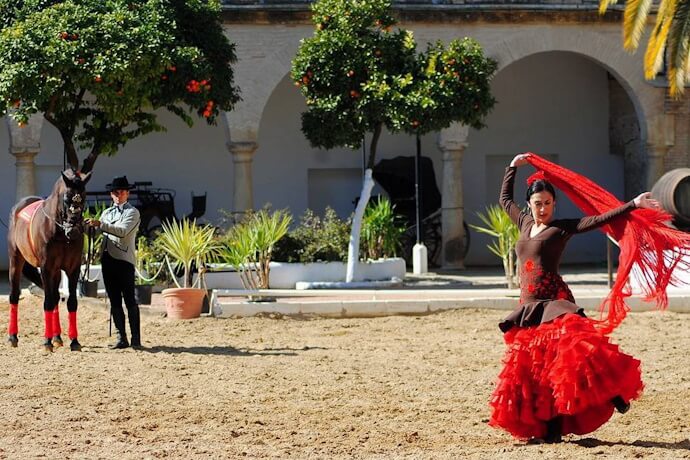
Deeply rooted in Andalusian culture pulsates the rhythmic energy of flamenco and the majestic grace of equestrian displays. These performances illuminate the passionate spirit of the region, captivating audiences in the heart of Córdoba.
Flamenco finds a vibrant home in the city's cultural scene. Visitors can immerse themselves in the soul-stirring performances held in intimate tablaos, where talented dancers, soulful singers and skilled guitarists create an electrifying atmosphere. The city resonates with the haunting melodies and intricate footwork, making it an essential experience for those seeking the essence of Andalusian culture.
In addition to flamenco, Córdoba offers the captivating spectacle of horse shows that showcase the region's deep equestrian traditions. The Royal Stables of Córdoba, known as the Caballerizas Reales, host spectacular displays of horsemanship, where riders skilfully execute traditional dressage and intricate manoeuvres. The combination of powerful Andalusian horses, traditional attire and precise choreography transports spectators to a bygone era.
Proximity to a stunning Andalusia's Moorish town
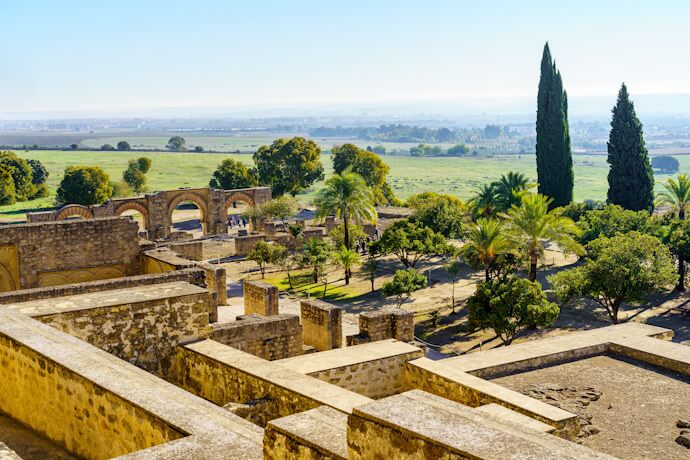
Medina Azahara, also known as the Shining City, stands as a mesmerizing archaeological gem on the outskirts of Córdoba. This vast palace-city complex from the 10th century served as the political and administrative heart of the Umayyad Caliphate of Córdoba.
Grand palaces, impressive gates and expansive courtyards showcase the opulence and sophistication of Islamic civilization during its zenith. The caliph's vision was to create a city that surpassed any contemporary in splendour. Rediscovered in the early 20th century, ongoing archaeological efforts continue to unveil the grandeur of this once-thriving city. Visitors today can explore the partially reconstructed ruins, marvel at the intricate architectural details and imagine the vibrant life that once flourished within the walls of Medina Azahara, offering a captivating glimpse into the rich history of Islamic Spain.
Gastronomic specialities to taste
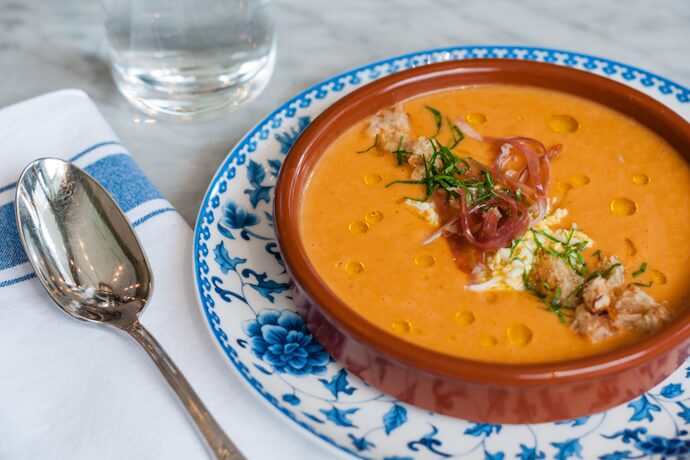
Córdoba's gastronomy is a delectable journey through the flavours of Andalusia, offering a unique blend of culinary traditions influenced by its diverse cultural history. One of the city's signature dishes is salmorejo, a cold tomato soup enriched with bread, olive oil and garlic, often garnished with hard-boiled eggs and jamón (cured ham). This refreshing dish is a perfect example of Mediterranean influence and its similarity with the famed gazpacho is no coincidence.
Rabo de toro, or oxtail stew, is a hearty and flavourful dish that reflects the region's affinity for slow-cooked, comforting meals. Typically made with oxtail braised to tender perfection and infused with a rich, savoury broth enhanced by red wine, aromatic herbs and an array of vegetables.
For those seeking an authentic taste of Córdoba, a visit to the city's taverns is a must. Here, you can indulge in the diverse tapas culture, savouring small, flavourful dishes like berenjenas con miel, fried eggplant drizzled with honey, or flamenquín, a breaded and deep-fried ham or pork roll.
Crafts to discover
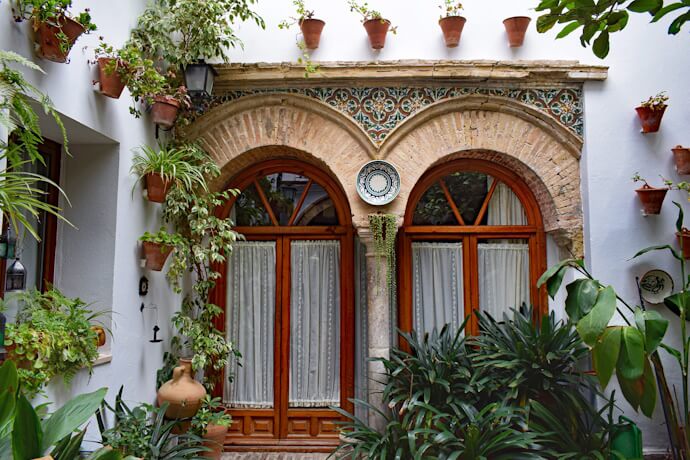
Córdoba's traditional crafts showcase a blend of influences from its diverse history. Exploring the markets and workshops in Córdoba provides a unique opportunity to appreciate the meticulous craftsmanship and artistic flair.
Córdoban leatherwork is renowned for its intricate detailing, often featuring geometric patterns and Islamic-inspired designs. Visitors can find a range of leather products, from belts and purses to intricately designed wallets, all showcasing the skilled craftsmanship that has been passed down through generations.
The city's artisans produce colourful and vibrant pieces of ceramics that draw inspiration from both Moorish and Andalusian traditions. Hand-painted tiles, ceramic plates and decorative items capture the essence of Córdoba's artistic spirit.
The art of silversmithing is another craft deeply rooted in Córdoba's history. Skilled artisans create intricate silver jewellery, often featuring filigree work and incorporating symbols reminiscent of the city's cultural and religious influences.
Festivals throughout the year
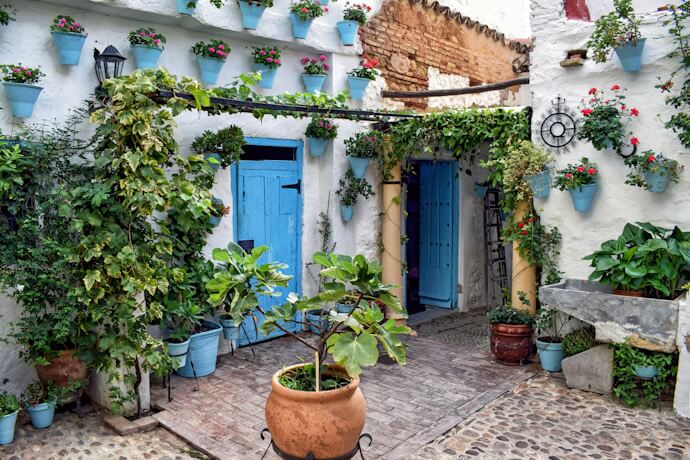
A kaleidoscope of cultural experiences embodies Córdoba’s passionate spirit, each reflecting the city's diverse traditions. Among the several that take place throughout the year, we listed some of the most expressive of the Andalusian culture.
In May, the city comes alive with the renowned Patio Festival (Festival de los Patios), a UNESCO-listed cultural extravaganza. Residents graciously open their private courtyards, revealing stunning floral displays that compete for the title of the most enchanting patio.
The International Festival of Sephardic Music illuminates the city with a harmonious celebration of the rich musical heritage of Sephardic Jews. This culturally significant event brings together musicians, performers and enthusiasts to honour and share the distinctive melodies, rhythms and poetic expressions of Sephardic music.
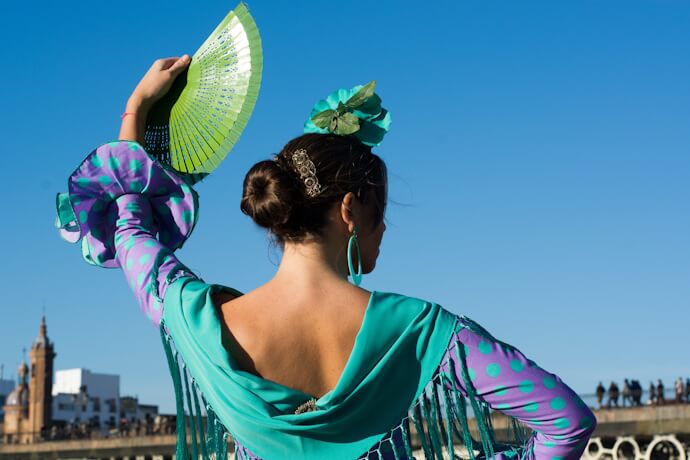
La Noche Blanca del Flamenco, in June, is a captivating event with mesmerizing rhythms and passionate expressions of this quintessential Andalusian art form. Held against the backdrop of Córdoba's historic settings, this "White Night of Flamenco" transforms the city into a vibrant stage where soulful melodies, intricate footwork and heartfelt emotions take centre stage.
Around September takes place the Horse Fair of Córdoba, a dynamic and lively celebration that captures the essence of Andalusian equestrian tradition. Held in the Caballerizas Reales de Córdoba, this spectacular gathering comes alive with the rhythmic sound of hooves as riders elegantly showcase their horses' skills through traditional dressage and choreographed displays.
Ready to be charmed by Córdoba?
These might be reasons enough for you to be seduced by Córdoba – but we just took a peek! With jaw-dropping monuments, ancient streets that practically beg you to get lost in (in a good way), and culture so lively it will make your flamenco shoes dance on their own - and we will not even start with delicious Mediterranean cuisine - it is like a sensory feast and you are invited! So, count on us to help you fully enjoy it and create the most wonderful memories in your Spanish adventure!


